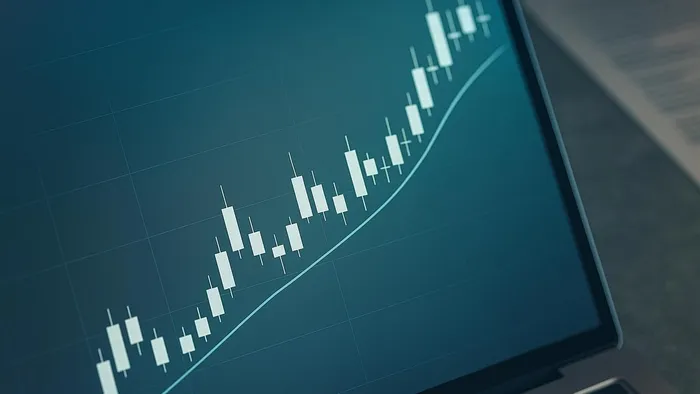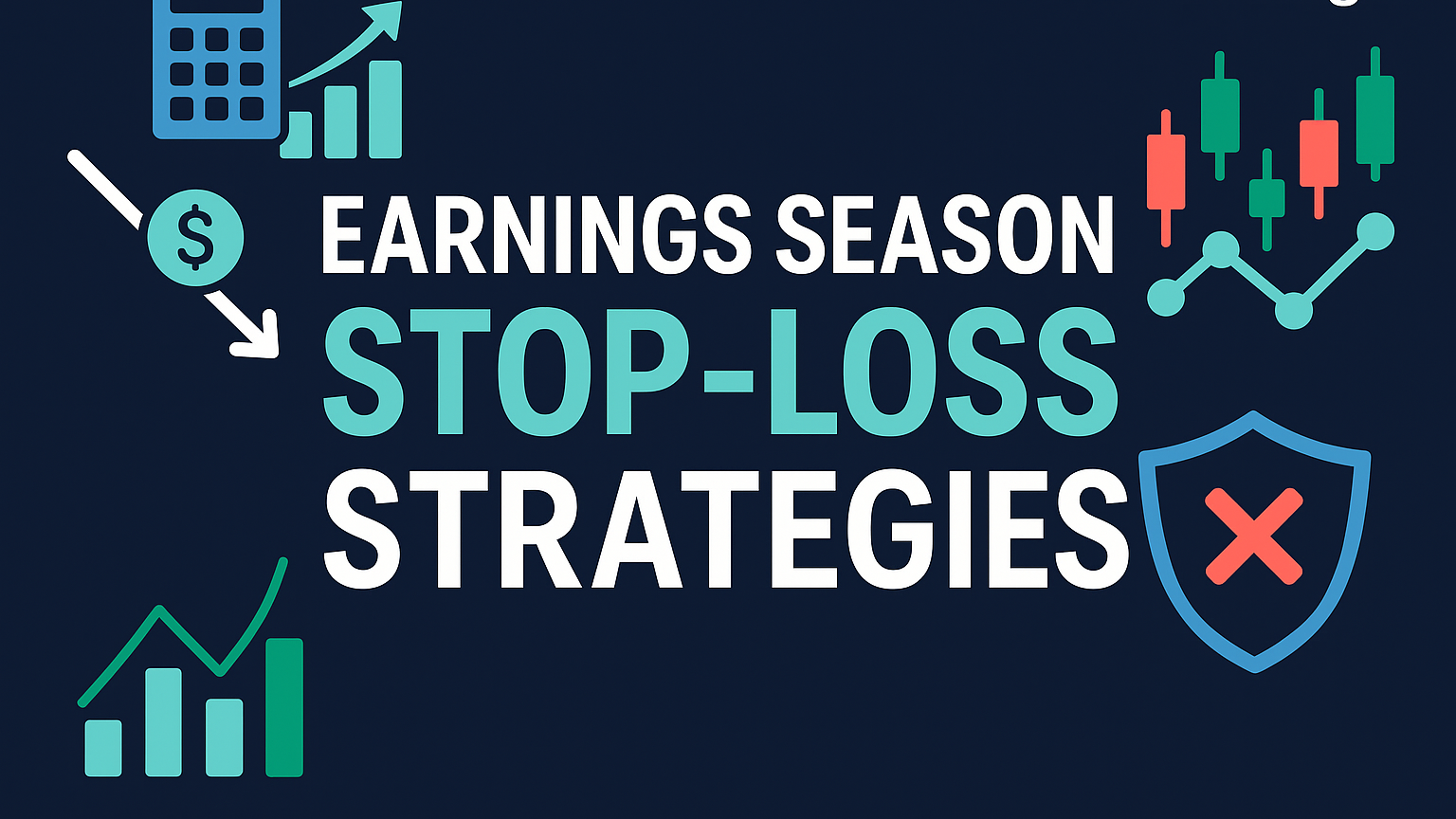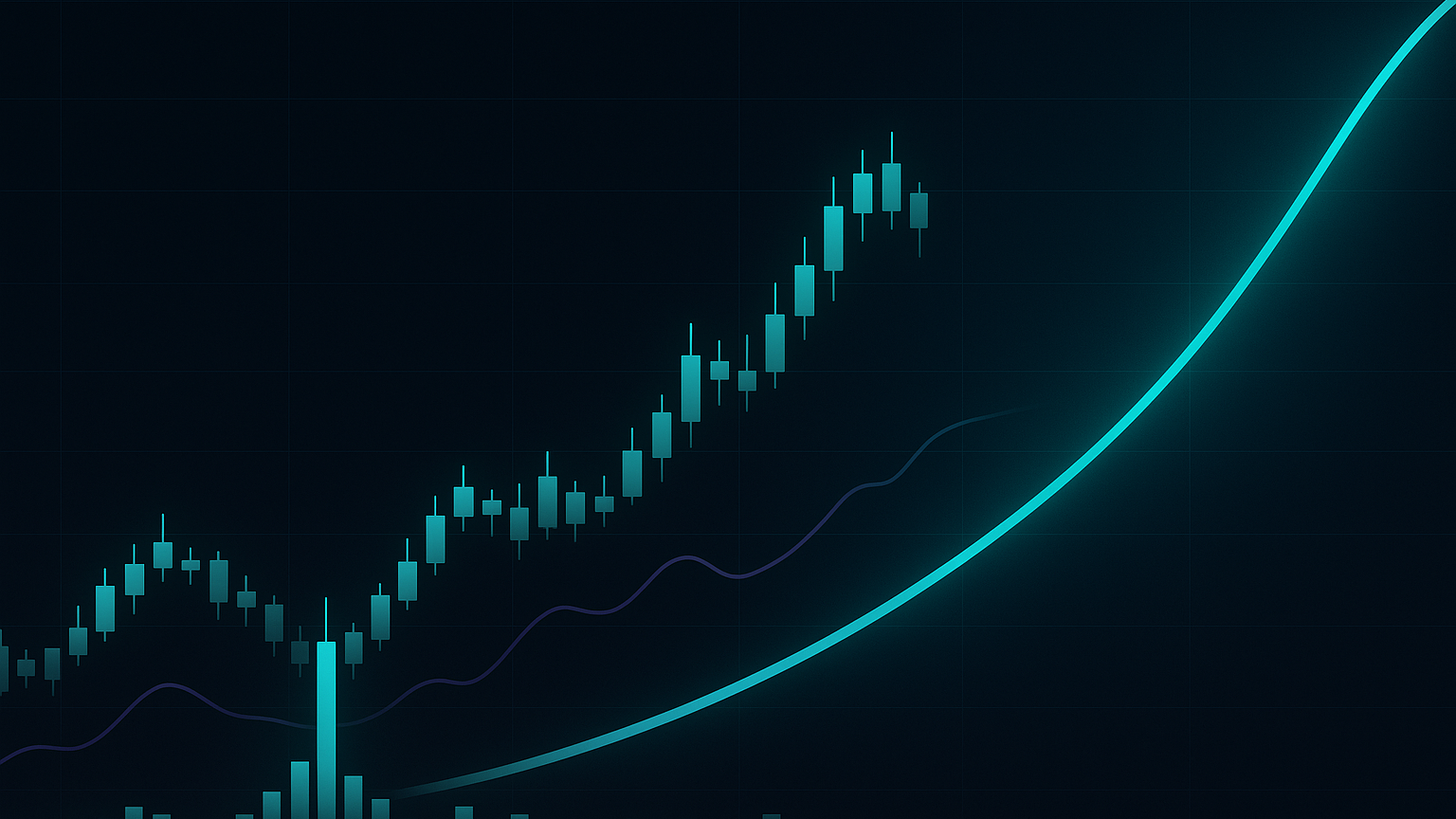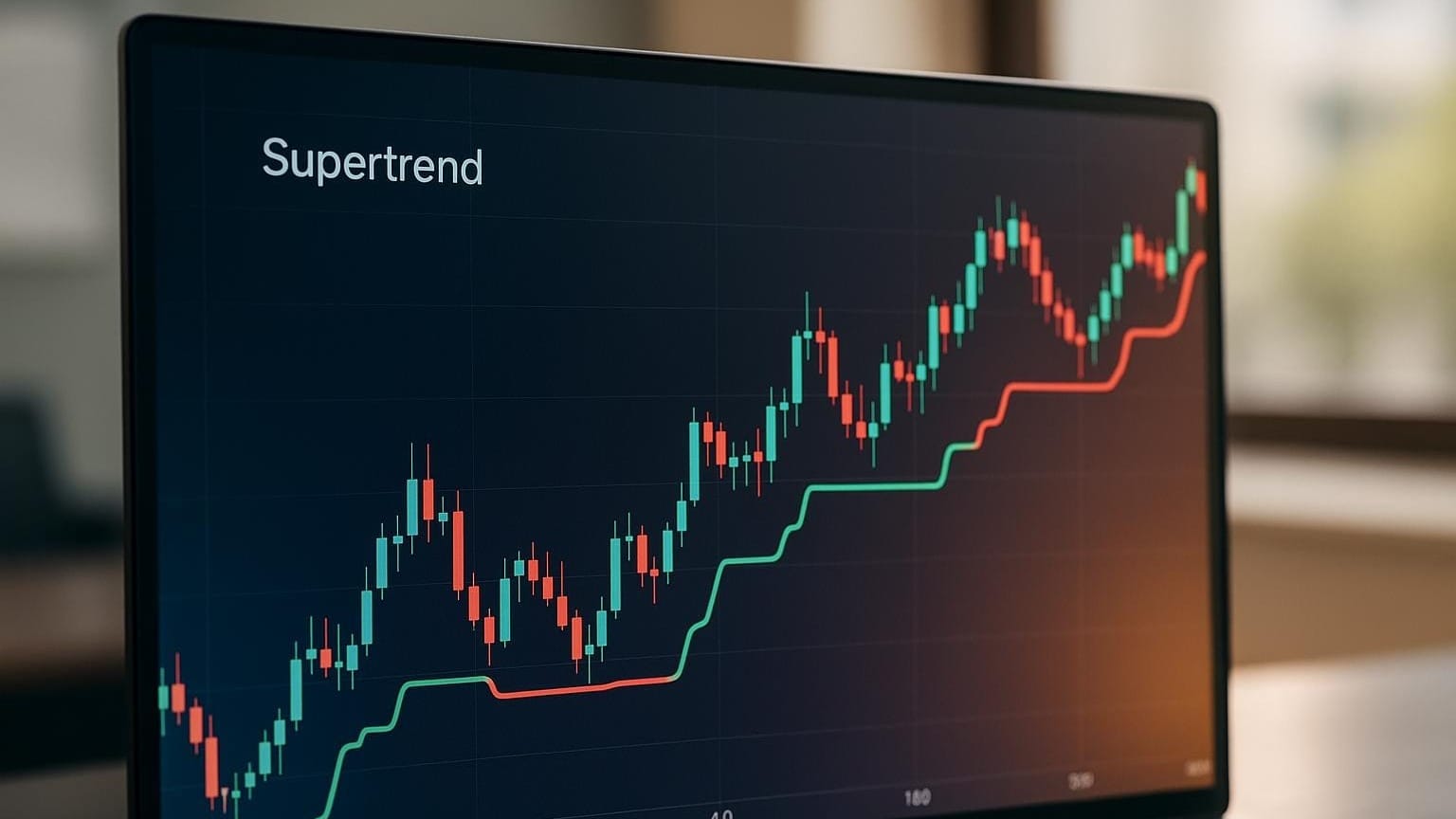Trading less often can lead to improved results by reducing costs, enhancing focus, and increasing the quality of trades.
Trading less often can lead to better results. Here's why:
- Fewer trades reduce costs: Hidden fees like bid-ask spreads, slippage, and taxes eat into your profits. High-turnover portfolios can lose nearly half their potential wealth over time.
- Better focus improves decisions: Overtrading leads to stress, impulsive actions, and poor judgment. Fewer trades allow for clearer analysis and disciplined strategies.
- Higher-quality trades win: Focusing on fewer, high-probability setups with strong risk-to-reward ratios boosts profitability, even with lower win rates.
- Reduced mental strain: Managing fewer positions helps avoid burnout, decision fatigue, and emotional mistakes like fear-driven exits or holding onto losses.
The Real Costs of Trading Too Much
What Is Overtrading?
Overtrading happens when traders execute too many trades without a well-thought-out strategy. Often this is fueled by emotions like the fear of missing out (FOMO), leading them to make decisions based on gut feelings or market chatter instead of waiting for solid opportunities.
Some traders fall into the trap of overtrading to feel productive, but this habit undermines their strategies and piles on unnecessary costs.
How Frequent Trading Hurts Your Wallet
Every trade comes with costs, even if you're using commission-free platforms. Bid-ask spreads, slippage, and other hidden expenses can quietly chip away at your profits [1].
Taxes are another major hurdle, especially for U.S. traders. Short-term capital gains—profits from assets held for less than a year—are taxed as ordinary income, with rates climbing as high as 37 % for top earners. Compare this to long-term capital gains, which are taxed at a maximum of 20 % for the same income bracket. Add state taxes and a potential 3.8 % federal surcharge, and your net returns shrink even more [2].
Here’s a stark example: A high-turnover portfolio needs to earn a 14 % pre-tax return to match the 8.8 % after-tax return of a low-turnover portfolio that earns just 10 % pre-tax [2]. Over 25 years, the difference is staggering. A low-turnover portfolio (5 % annual turnover) grows to $8,298,571, while a high-turnover portfolio (100 % turnover) only reaches $4,606,081 [2]. That’s nearly half the wealth lost to excessive trading costs and taxes.
"In this world nothing can be said to be certain, except death and taxes." – Benjamin Franklin [2]
Mental Stress and Poor Decision-Making
The financial toll of overtrading is just one side of the coin—there’s also the mental strain. Constantly monitoring trades and second-guessing decisions can wear you down and hurt your performance.
Having too many open positions leads to decision fatigue, making it harder to think clearly. This stress often results in closing winning trades too early out of fear or clinging to losing positions in the hope they’ll bounce back.
Frequent trading also throws off your strategic balance. Instead of diversifying risk across different assets and timeframes, you might end up with a portfolio that’s more volatile but doesn’t deliver better returns [3].
Burnout is inevitable when you’re glued to your screen, juggling multiple trades. This mental exhaustion clouds your judgment and pulls you further from the disciplined approach needed for consistent success. As Warren Buffett wisely put it:
"You do things when the opportunities come along. I've had periods in my life when I've had a bundle of ideas come along, and I've had long dry spells. If I get an idea next week, I'll do something. If not, I won't do a thing." – Warren Buffett [2]
How To Stop Overtrading NOW! 😤 The #1 Mistake Killing Your Trading Account (FIX THIS)
Why Better Trades Beat More Trades
Focusing on quality over quantity in trading isn't just a cost-saving strategy—it's a game-changer for performance. Success in trading isn’t about winning every time; it’s about making sure your gains outweigh your losses by managing risk smartly.
Better Returns with Less Risk
The numbers speak for themselves. Professional traders know that most have win rates around 60 % or less [5]. That means even the best traders lose about 4 out of every 10 trades. The real difference between those who profit and those who don’t lies in how they handle risk and reward.
Selective trading zeroes in on high-probability setups that align with market trends [4], offering better risk-to-reward ratios. For example, swing and position traders often aim for ratios of 1:3 or higher. This means they can stay profitable even if they win only 3 out of 10 trades [6]. Additionally, trading on longer time frames and in highly liquid markets [4] helps clarify trends and reduce the risks posed by sudden market swings.
Reducing Emotional Trading Mistakes
One of the biggest benefits of selective trading is its ability to filter out emotional decision-making. By committing to only the best setups, you’re forced to weigh potential rewards against acceptable volatility [6]. This approach encourages objective analysis over impulsive reactions and reinforces patience—even if it means passing on many trades.
The fear of missing out (FOMO) fades when you recognize that 81.1 % of retail investor accounts lose money [4], often from chasing too many opportunities. With fewer trades to manage, you can give each one the attention it deserves, sticking to your exit strategies and reducing stress. By focusing on quality, you not only avoid emotion-driven mistakes but also set yourself up for better concentration and clarity.
Less Stress and Better Focus
Trading fewer, higher-quality setups significantly lightens the mental load. Instead of constantly scanning for trades, you can concentrate on analyzing only the most promising opportunities. This targeted approach also lets you test and refine different risk-reward setups systematically [6], improving your strategy over time.
Beyond reducing stress, selective trading helps you sync with the natural rhythms of the market. It allows you to better understand patterns and trends instead of forcing trades during quiet periods, which often leads to poor results.
"The reward-risk ratio is a powerful tool, but only if it is applied consistently. Unrealistic expectations can lead traders to abandon their own rules." – Gates & Scarpa [6]
It’s also worth noting that different trading styles require different methods. For instance, scalpers might use lower risk-reward ratios like 1:1 or 1:1.5 but rely on high win rates. On the other hand, position traders can afford lower win rates because they target much higher ratios [6]. The key is finding a style that matches your personality and schedule, which makes selective trading even more effective.
Tools and Methods for Picking Better Trades
When it comes to identifying trades with strong potential, having the right resources at your disposal can make all the difference. The goal is to cut through market noise and zero in on opportunities that offer the best chances of success.
Using LuxAlgo's Technical Analysis Tools
LuxAlgo provides an extensive range of technical analysis resources designed to help confirm trade setups before you risk any capital. These resources are crafted to pinpoint quality opportunities:
- Price Action Concepts (PAC): Features automatic pattern detection, volumetric order blocks, and market structure analysis to help you identify critical levels in the market.
- Signals & Overlays (S&O): Offers dynamic insights with multiple signal algorithms and customizable overlays, enabling you to adapt signals to your trading style and risk tolerance [7].
- Oscillator Matrix (OSC): Combines trend-following indicators with reversal detection, including smart money-flow metrics and real-time divergence signals, to help you spot potential trend shifts early [8][9].
Together, these resources provide a well-rounded view of market conditions rather than relying on isolated indicators. To further refine your trading setups, you can pair them with screeners and backtesters for a more targeted approach.
Finding Setups with Screeners and Backtesters
LuxAlgo's screeners and backtesters work hand-in-hand with its technical resources, allowing traders to filter the market for setups that align with their specific criteria. For example, you can use the screeners to search for assets that meet your PAC, S&O, or OSC parameters. This ensures your focus is only on setups that already meet your standards.
Backtesting takes this process a step further by letting you test strategies against historical data. This helps you assess potential profitability before putting real money on the line [10]. It's especially useful for traders aiming to focus on fewer, high-quality trades.
"When it comes to high probability trade setups, the objective is to enter the market when the odds may be in your favor." – Pepperstone [4]
That said, it's important to remember that 81.1 % of retail investor accounts lose money when trading CFDs [4]. Often, this happens because strategies are not properly validated. Using multiple time frames for analysis can help you see the bigger picture while pinpointing optimal entry points.
Improving Strategies with AI Backtesting
AI-powered backtesting takes strategy refinement to the next level. By analyzing massive datasets, AI can uncover patterns that might go unnoticed in manual reviews. LuxAlgo's AI Backtesting Assistant processes thousands of data points to identify the conditions under which specific setups perform best [11].
For example, one trader using a 1-minute scalping strategy discovered through AI analysis that trades executed during the London open had a 63 % higher win rate compared to other sessions [11]. Testing your strategy across different market conditions—trending, sideways, or volatile—can help you fine-tune your approach with precision and objectivity. This data-driven method ensures you're focusing on the most promising trades.
How Journaling and Backtesting Improve Your Decisions
The key difference between traders who succeed and those who struggle often lies in their ability to learn from past experiences. While many focus on chasing the next big trade, the most profitable traders dedicate time to analyzing their previous trades. This disciplined approach reinforces a simple but effective strategy: fewer, higher-quality trades lead to better results over time. Tools like trade journaling and systematic backtesting can help refine your methods, ensuring you concentrate on quality trades and improve your overall performance.
Trade Journaling for Better Analysis
A detailed trading journal is an essential tool for identifying effective strategies and avoiding repeated mistakes. But it’s not just about tracking wins and losses—it’s about capturing the full story behind each decision. Your journal should include key details like entry and exit points, trade size, profit or loss, the strategies you used, and even your emotional state during the trade [12]. Logging these details promptly in U.S. date format (MM/DD/YYYY) ensures consistency for future reviews.
As trading expert Ed Seykota puts it:
"Track emotions, market conditions, and important lessons learned" [14]
By keeping track of these elements, you can uncover patterns in your behavior that may lead to poor decisions [13]. Reviewing your journal weekly or monthly helps you spot areas for improvement and set clear goals to enhance your performance.
A common insight from journaling is how different trade types tend to reveal recurring challenges:
| Type of Trade | Common Mistakes | Key Lessons |
|---|---|---|
| Winning | Ignoring stop-loss limits | Stick to strict risk management rules |
| Losing | Overtrading | Follow a disciplined trading plan |
| Neutral | Misjudging market conditions | Improve your analytical skills |
While journaling provides a detailed record of your trades, backtesting takes it a step further by using historical data to validate your strategies.
Testing Strategies with Data
Journaling shows you what happened, but backtesting answers the question: "What could happen?" By applying your trading strategy to historical data, you can evaluate how it might perform under different market conditions [15]. The biggest benefit? You can assess a strategy’s potential without risking real money.
To backtest effectively, use a reliable platform and establish clear rules for your strategy. LuxAlgo's AI Backtesting Assistant allows you to analyze thousands of data points, helping you identify the best conditions for specific setups.
Make sure to test your strategy with both in-sample and out-of-sample data, while accounting for all trading costs, to get a realistic picture of its performance [15] [16]. Focus on metrics like win rate, risk-reward ratio, profitability, maximum drawdown, and consistency across different market scenarios. This data-driven approach can give you the confidence to focus on fewer, higher-quality trades.
Comparing Results Before and After Changes
Armed with insights from journaling and backtesting, you can measure how your trading improves over time. One effective way to do this is by comparing your performance metrics before and after adopting a more selective trading strategy. For instance, you might analyze your results over a three-month period and then implement a more focused approach for the next three months. Track key metrics like total profit/loss, average profit per trade, win rate, and maximum drawdown to see the impact of your changes.
A hypothetical example might show that reducing the number of trades while prioritizing quality setups leads to higher profitability. Regularly updating and refining your strategy based on backtesting and live data ensures you’re always improving [16]. Combining backtesting results with forward testing or a demo account can provide extra validation before risking real capital. In the end, this process strengthens your risk management and helps you zero in on the setups that consistently deliver the best risk-adjusted returns.
How Trading Less Improves Risk Management
Trading less often isn’t just about reducing activity—it’s about creating the mental clarity and focus needed to refine your risk management strategies. By prioritizing quality over quantity, you can make more calculated decisions regarding position sizing, stop-loss placement, and risk-to-reward ratios. This disciplined approach helps protect your capital while maximizing the potential of each trade, reinforcing a strategic mindset.
Better Position Sizing and Stop-Loss Placement
When you focus on fewer trades, you gain the time and space to calculate position sizes more precisely. Instead of jumping into multiple trades throughout the day, you can carefully assess how much capital to risk based on your account size, market volatility, and the specific trade setup. This deliberate approach ensures that each trade represents a balanced portion of your overall capital, reducing the chances of overexposure.
Stop-loss placement also benefits from this focused strategy. With fewer trades to monitor, you can dedicate more time to analyzing key support and resistance levels, volatility patterns, and technical indicators. This allows you to set stop-losses based on market structure rather than arbitrary figures, leading to more logical and effective exit points.
By trading less, you also reduce the temptation to adjust stop-losses impulsively. This consistency reinforces discipline, which is often the cornerstone of successful risk management. Over time, this approach can lead to better performance, even with a lower frequency of trades.
Improving Risk-to-Reward Ratios
Selective trading naturally improves your risk-to-reward ratios. By waiting for high-probability setups, you can focus on trades where the potential reward significantly outweighs the risk. This patience is a key driver of long-term success.
As legendary trader Paul Tudor Jones puts it:
"You should always be able to find something where you can skew the reward-risk relationship so greatly in your favor that you can take a variety of small investments with great reward-risk opportunities that should give you minimum drawdown pain and maximum upside opportunities." [17]
This mindset is much easier to adopt when you’re not constantly searching for trades. High-quality setups often require waiting for specific conditions, like clear breakouts or strong trends with pullbacks.
The math behind risk-to-reward ratios also works in your favor. For example, if you consistently aim for a 1:3 ratio, you only need to be correct 25 % of the time to break even, with anything above that turning into profit. However, achieving these favorable ratios demands patience and discipline—qualities that are much easier to maintain when you’re not overtrading.
George Soros highlights this principle:
"It's not whether you're right or wrong that's important, but how much money you make when you're right and how much you lose when you're wrong." [17]
Using LuxAlgo Tools for Risk Management
LuxAlgo offers a range of features designed to help traders adopt a more disciplined, risk-conscious approach. The Price Action Concepts (PAC) toolkit simplifies the process of identifying high-probability setups by highlighting market structure and volumetric order blocks.
The Signals & Overlays (S&O) toolkit provides customizable signal algorithms that allow you to filter out lower-quality setups. This ensures you focus only on trades that meet your specific risk criteria, making it easier to maintain consistent risk-to-reward ratios across different market conditions.
LuxAlgo's screeners further streamline the process by filtering thousands of potential setups down to those that align with your risk tolerance and reward expectations. Instead of spending hours manually scanning charts, you can quickly pinpoint opportunities that fit your strategy, giving you more time to analyze fewer, higher-quality trades.
The AI Backtesting Assistant adds another layer of precision by letting you test various risk parameters against historical data. You can experiment with different stop-loss levels, position sizes, and risk-to-reward targets to find the optimal combination for your trading style and the current market environment.
"It is essential to wait for trades with a good risk-reward ratio. Patience is a virtue for a trader." – Alexander Elder [17]
Conclusion: The Benefits of Trading Less
Research consistently shows that trading less often can lead to better results. A study by Barber and Odean found that accounts with high trading activity underperform low-turnover accounts by several percentage points annually. The reasons are clear: frequent trading drives up transaction costs and often leads to poorly timed decisions [20]. The data speaks for itself—households that overtrade tend to earn below-average returns, reinforcing the idea that "those who trade the most are hurt the most" [21].
Trading less offers more than just cost savings—it sharpens your focus and improves your overall approach. By zeroing in on quality trades, you gain benefits like clearer decision-making, reduced stress, and better risk management.
The Technical Index & Bond ETF trading strategy achieved average annual returns of 15 %–51 % (depending on ETF leverage) with a maximum drawdown of just 7 %–21 %. This was accomplished by focusing solely on high-quality setups and moving to cash during less favorable market conditions [18]. This selective approach not only delivered strong performance but also reduced the stress and effort involved in trading.
Modern tools make it even easier to adopt this disciplined approach. LuxAlgo’s range of features is designed to streamline your trading process. The Price Action Concepts toolkit highlights strong setups, while Signals & Overlays help filter out weaker opportunities. The screeners save you hours of manual analysis by identifying trades that meet your strict criteria from thousands of possibilities.
The AI Backtesting Assistant takes this one step further, allowing you to test and refine your strategy using historical data.
Even seasoned traders struggle with overtrading. Research shows that traders with more than 50 days of unprofitable activity have a 95.3 % chance of reverting to day trading within a year [19]. Breaking this cycle requires both a disciplined mindset and the right resources. By combining a focus on quality with LuxAlgo's advanced filtering and analysis capabilities, you set yourself up for steady, compounding growth—avoiding the boom-and-bust cycles that frequent traders often face.
The bottom line? Trade less, trade smarter, and watch your portfolio grow while keeping your peace of mind intact.
FAQs
How can I focus on fewer, high-quality trades by identifying better trade setups?
To zero in on fewer, higher-quality trades, start by examining the overall market trend and making sure it aligns with your trading approach. Use tools like moving averages or RSI and watch for patterns like candlestick formations to identify high-probability setups. Pay special attention to setups that occur during key moments, like session openings, price gaps, or after strong market movements.
It's also important to focus on price action and identify key support and resistance levels to fine-tune your entry points. Keeping a trade journal and backtesting your strategies can reveal which setups consistently deliver results, helping you focus on trades with the best potential.
How can trading less often improve your results?
Trading less often comes with both mental and financial perks. On the mental side, it helps curb emotional reactions, such as impulsive decisions or overtrading, which often cloud judgment. This approach promotes clearer thinking and a more disciplined, measured way of engaging with the market.
On the financial front, concentrating on fewer, higher-quality trades can cut down on unnecessary losses and boost overall profitability. By zeroing in on high-probability setups, traders are more likely to make consistent choices that align with their strategy, leading to better long-term outcomes.
How can LuxAlgo's tools help traders avoid overtrading and focus on better-quality trades?
LuxAlgo’s clear, rule-based signals and adjustable indicators simplify spotting high-probability setups and help traders steer clear of emotional decisions driven by FOMO or greed. With performance-tracking alerts and risk-management resources, LuxAlgo supports sticking to a structured plan and managing risks efficiently, paving the way for more consistent outcomes over time.
References
- Risk-to-Reward vs. Win Rate
- LuxAlgo Home
- Guide to Technical Analysis Tools
- Price Action Concepts (PAC)
- Volumetric Order Blocks
- Market Structure Analysis
- Signals & Overlays Overview
- Trailing Maxima / Minima Indicator
- Reversal Spotting Made Easy
- Triangular Momentum Oscillator
- Oscillator Matrix Toolkit
- Oscillator Matrix Docs
- Backtester (S&O)
- AI Backtesting Features
- AI Backtesting Assistant Breakdown
- Nifty Trading Academy on Overtrading
- Hidden Cost of Overtrading
- Chase: What Is Overtrading
- High-Probability Trade Setups
- Win Rate vs. Risk-Reward
- Risk-Reward Ratio Guide
- Investopedia Stock Screeners
- FXReplay on AI Backtesting
- TradeFundrr Journaling
- Professional Trading Journal
- Importance of a Trading Journal
- FTMO on Backtesting
- Fusion Markets Backtesting
- Reward-Risk Ratio Guide
- Barber & Odean Study
- Data on Day Trading
- Why Successful Traders Trade Less
- Is Day Trading Profitable?








